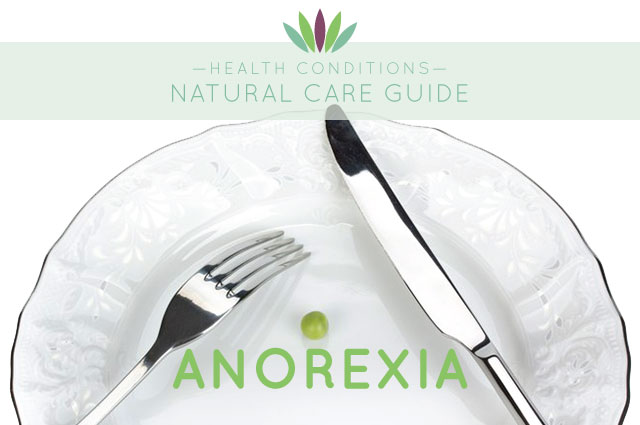Anorexia nervosa is an eating disorder that stems from a preoccupation with weight, food, and body image. It is characterized by an intense fear of gaining weight or getting fat. Between 85 percent and 90 percent of all cases occur among women, most often during adolescence or the twenties, but anorexia nervosa can occur later (and earlier) in life, even among young children. Anorexia or bulimia are eating disorders that often occur together.
Symptoms
In anorexia nervosa, body weight drops to less than 85 percent of normal for age and height. Patients tend to deny the seriousness of their low weight and have a disturbed and unrealistic view of how much they weigh and how they look. A women of childbearing age who stops menstruating for three or more consecutive cycles is considered affected. The disorder can lead to a number of life-threatening medical complications including cardiac abnormalities (slow heart rate, disturbances in the heart’s rhythm), dangerously low blood pressure, dangerously low body temperature and a low white blood cell count. Other symptoms can include chronic constipation, osteoporosis, and, among teenagers, slowed growth or development, short stature, infertility, hair loss and nail destruction. One tip-off to an unhealthy preoccupation with weight among young girls is how often they weigh themselves. A study from the University of Minnesota published in the December, 2006, issue of the Journal of Adolescent Health found that girls who weighed themselves frequently were more likely to develop anorexia nervosa or other eating disorders.
Causes
Biological, psychological and socio-cultural factors influence the development of anorexia nervosa including the powerful influences of the entertainment and fashion industries, which have fostered the perception that beauty and sexual attractiveness equate with being ultra-thin. Those affected with anorexia nervosa tend to be perfectionists and have a personal or family history of obesity, eating disorders, substance abuse, depression, anxiety, anger, low self-esteem or loneliness, a personal history of sexual abuse, teasing and harassment. Participation in competitive sports such as figure-skating, gymnastics, dance and crew, in which body shape and size are a factor in performance, can increase the risk among both boys and girls. Wrestling also poses a risk for young men.
Anorexia begins with vitamins, minerals, and other nutritional deficiencies resulting from an anorexic’s first diet attempts. Easily depleted by undereating, vitamin B1 (thiamine), can cause one to lose appetite. Suddenly, dieting becomes easy. Another important nutrient hard to find in foods is zinc. A classic symptom of zinc deficiency is loss of normal appetite. Not surprisingly, zinc is deficient in bulimics and anorexics. Both of these deficiencies coupled together, lead one down the path of eating disorders.
As zinc becomes more deficient and the adrenals become weakened, copper dysregulation ensues, which further exacerbates the issue. Listen to these two great podcasts: Copper Dysregulation and The True Underlying Causes of Eating Disorders.
A large percentage of girls and boys who develop and eating disorder begin with a vegetarian or vegan diet. As a child stops eating meat, she develops serious nutritional deficiencies. The first deficiency is protein, a very serious matter, as the body cannot produce hormones, enzymes, and neurotransmitters. In parallel with protein deficiency comes zinc deficiency, as zinc is found primarily in red meat. Vegetarian diets are largely based on carbohydrates. As carbohydrates alter hormonal balance in the body towards too much insulin production, the whole metabolism shifts to a fat-storing mode. Losing weight in this mode is very difficult, propelling the person into starvation to lose weight.
The decent from vegetarianism to anorexia looks something like this:
- Due to nutritional deficiencies, the immune system becomes malnourished, resulting in chronic infections. As infections are treated with antibiotics, damage to gut flora follows.
- Abnormal gut flora begins producing toxins, which flow through the damaged gut wall into the blood and get distributed around the body. As these toxins get into the brain, they cause problems with mood, behavior, and sensory perception. It is the sensory perception, namely self-perception, that goes awry in children who develop an eating disorder. When an anorexic girl looks in the mirror and sees a fat person, the reason is the toxicity in her brain. Other forms of perception get distorted as well, like perception of taste and texture of food, sense of smell, perception of human relationships and emotions, etc, etc.
- Gut degeneration. Abnormal gut flora damage the gut wall making it ‘leaky.’ Without nutrients to regenerate the gut lining, it deteriorates and is unable to handle food properly. At the same time the gut cannot produce digestive juices and enzymes essential for food digestion and absorption. This is due in part to the adrenal fatigue that comes with starvation — not enough HCL is produced with one has adrenal fatigue. These digestive problems worsen when anorexics are coaxed to eat, further propelling them away from food. The typical vegetarian carbohydrate diet does not get digested properly, but instead feeds pathogenic bacteria in the gut allowing them to produce more toxins.
- Hormonal exhaustion. Hormones are proteins. The body cannot build them without an adequate supply of protein, zinc, magnesium, fat-soluble vitamins, etc. As hormones rule our metabolism, growth, repair, the child stops growing, develops osteoporosis, fatigue, emotional and behavioral problems, sleep problems, etc. As mainstream medicine gives no thought to what particular food recovering anorexics should eat, they are largely given carbohydrates. As the patient is low in hormones and have a resultant slow metabolism, the calories get stored as fat. That is why these patients put on weight very quickly as soon as they start eating, which leads to a relapse.
- The pathogenic bacteria and yeast in the gut cause the patient to crave carbohydrates as they have major blood sugar swings. Patients with eating disorders binge on processed carbohydrates like sweets, sodas, chocolates, cakes, etc. When the blood sugar drops, they have an irresistible urge to purge. The processed carbs and sugar feed the abnormal gut flora and perpetuate the whole problem or make it worse in the long run. The only way to get these cravings under control is with an appropriate diet. That diet being full of protein. This is the only way to deal with an eating disorder, be it anorexia, bulimia, compulsive bingeing, etc.
Conventional Treatment
Treatment depends on the severity of the illness. Hospitalization may be required for those who have lost an excessive amount of weight very quickly or those who have developed serious metabolic problems, clinical depression, psychosis or who are considered at risk for suicide. For less severe cases, treatment may include psychotherapy, cognitive or behavioral therapy, nutrition counseling, medical monitoring and antidepressant drugs. Treatment is most successful when anorexia nervosa is diagnosed early in its course. The longer it persists, the more difficult it is to treat.
Wendy’s Natural Recommendations
Eating disorders require professional medical treatment, including family therapy to learn how to help an affected child or other relative. All these recommendations will begin nourishing the patient. As the most severe deficiencies start melting away, the “bingo day” will come, when the patient will wake up one morning, look in the mirror and suddenly realize just how emaciated they look. That means that normal self-perception has started to return. From this point, real feeding and recovery can begin.
Lifestyle
- Massage may reduce anxiety and depression and help foster a healthier body image. Both touch and movement therapies such as the Feldenkrais Method, a type of bodywork, can be beneficial. The exercises can re-educate the brain and nervous system to develop new ways of moving and perceiving the body. Some patients have improved with a combination of dance/movement therapy.
Supplements
Many supplements need to be used to compensate for all the nutritional and neurotransmitter deficiencies suffered by anorexics. supplements contain almost no calories, so the patient shouldn’t fear them. The patient can rely on these substitutes until they begin eating, though they cannot substitute as food for long. Taking these supplements will help relieve their overworked adrenal glands to gently renew their ability to handle stress. For dosage suggestions, see The Diet Cure by Julia Ross.
- St. John’s Wort. Helpful for some for depression. A good alternative to antidepressants, but does not work for everyone. I like Protocols for Life St. John’s Wort.
- Vitamin B1 (thiamine) will help to regain appetite.
- Zinc. A classic symptom of zinc deficiency is loss of taste and normal appetite. Not surprisingly, zinc is deficient in bulimics and anorexics. One five year study showed an 85% recovery rate with zinc supplementation. Take 50mg of zinc a day. Zinc can be found in the Myers Detox Store.
- Vitamin C. Vitamin C is key to recovery. I prefer an organic food-based Vitamin C like Innate Response. Avoid synthetic ascorbic acid.
- Trytophan is essential to increase the lack of serotonin that is at the root cause of anorexia and other eating disorders.I recommend Jigsaw 5-HTP, the precursor to tryptophan or taking tryptophan after 5-HTP has not worked. It can help turn off obsession — obsession with body size. Increase supplementation until “the voice” is silenced. Serotonin-activating antidepressants, which can be quite beneficial for bulimics, typically fail with anorexics. Yet both eating disorders display low-serotonin symptoms. Most bulimics actually keep some food down, so their serotonin function is closer to normal. This give SSRI’s more to work with. Anorexics must expand their serotonin levels with tryptophan. This helps them respond better to SSRI’s as needed.
- GABA will reduce stress. GABA acts just like the medication Xanax to calm the nervous system but is not habit forming.
- L-tyrosine will bring back energy and sparkle by stimulating brain and thyroid function. Helps with caffeine cravings, but do not use with caffeine. I like Thorne L-tyrosine.
- DL-phenylalanine (DLPA). DLPA is the precursor to endorphins. They kill pain and ease stress. Anorexics are addicted to endorphins, which are released when they starve. If one’s body has become addicted to these natural opiates and they resume normal eating, they will miss the endorphin high and go into sudden withdrawal, just as heroin users do. One can build up these natural pleasure chemicals with DLPA, so that they won’t need to starve to get the high. DLPA will help one wean off NutraSweet, if they’re addicted to diet gum, soda, etc. If DLPA is too stimulating, try DPA, D-phenylalanine.
- A complete free-form amino acid supplement (Total Amino Solution by Genesa) will help restore vital protein to heart, muscles, and brain, and support other vital functions as the ability to eat increases.
Food
- Aloe vera juice is wonderful for anorexics who vomit or use laxatives. It heals and stimulates the digestive tract.
- Fix gut bacteria. Pathogenic gut flora must be fixed by supplementing probiotics, eating fermented foods, and avoiding carbohydrates and sweets. Eating raw or fermented garlic also kills pathogenic gut flora. I also recommend a daily probiotic.
- Drink bone broth. Meat stock, aka bone broth, has very little calories and is a liquid, which people with eating disorders are more likely to eat. Meat stock will provide amino acids, minerals and fats. Drink one cup every hour. This will start the healing process in the gut lining and provide vital nutrition. See my recipe for bone broth.
This material is for educational purposes only. The preceding statements have not been evaluated by the Food and Drug Administration. This information is not intended to diagnose, treat, cure or prevent any disease.











